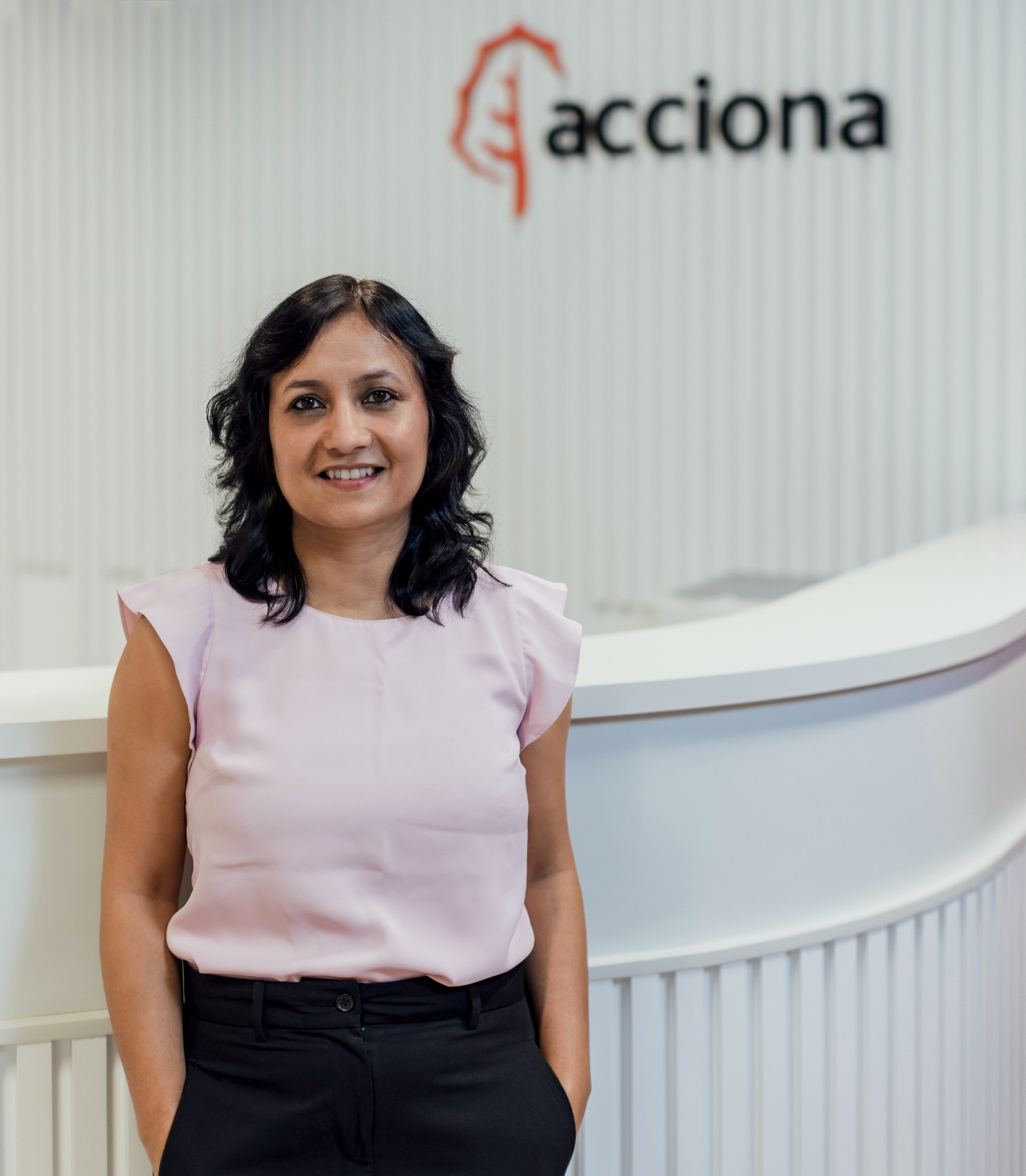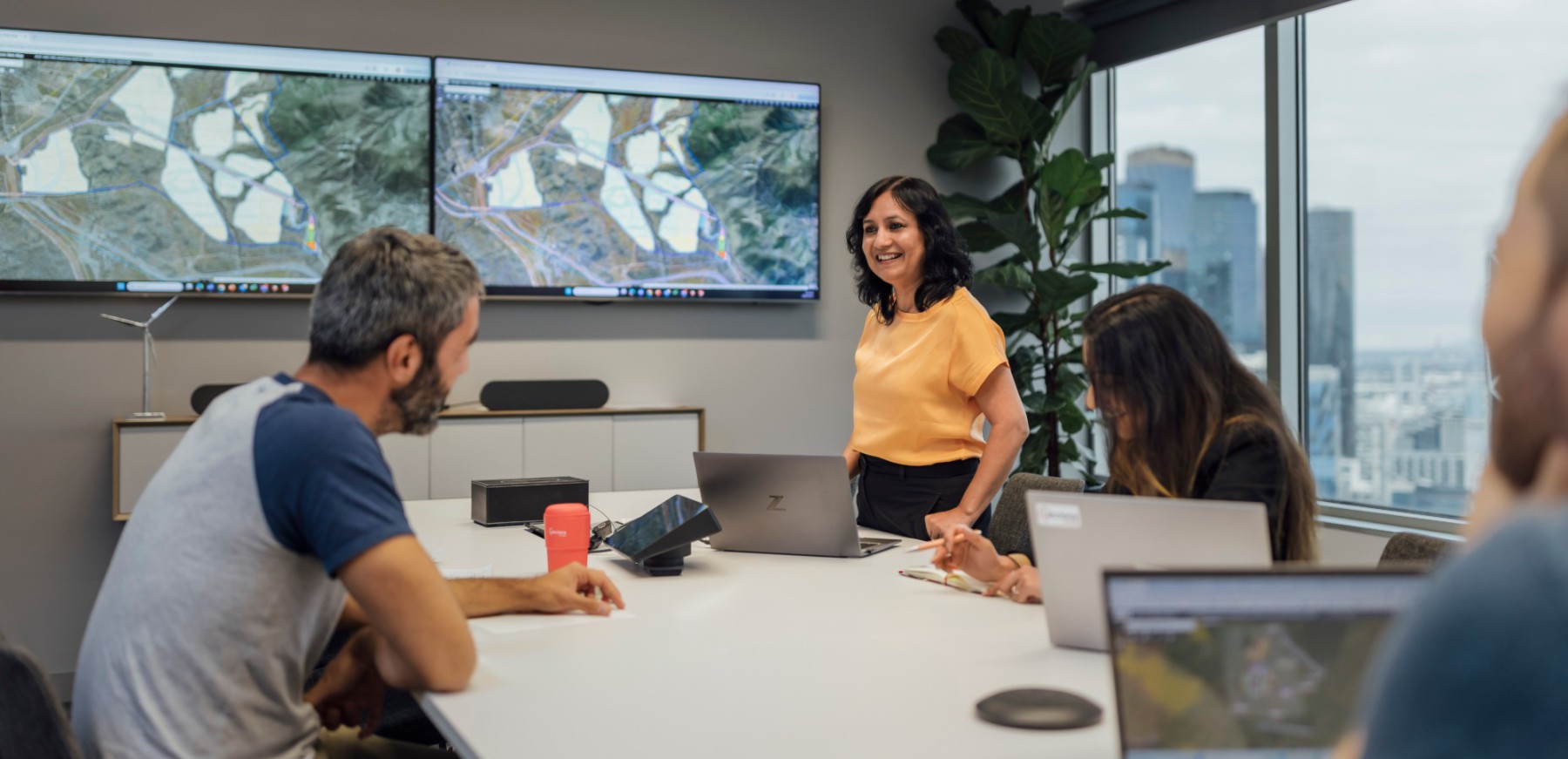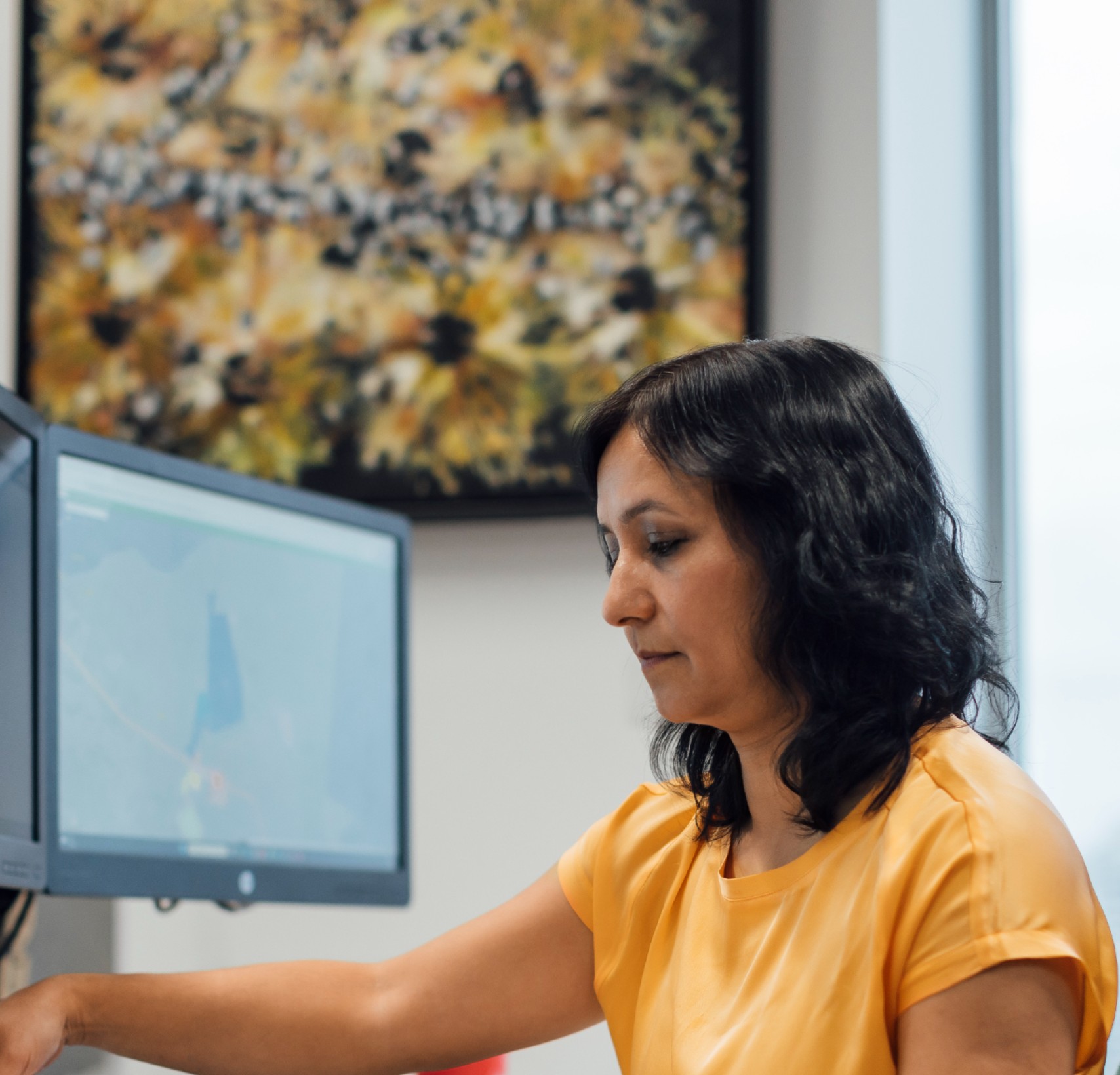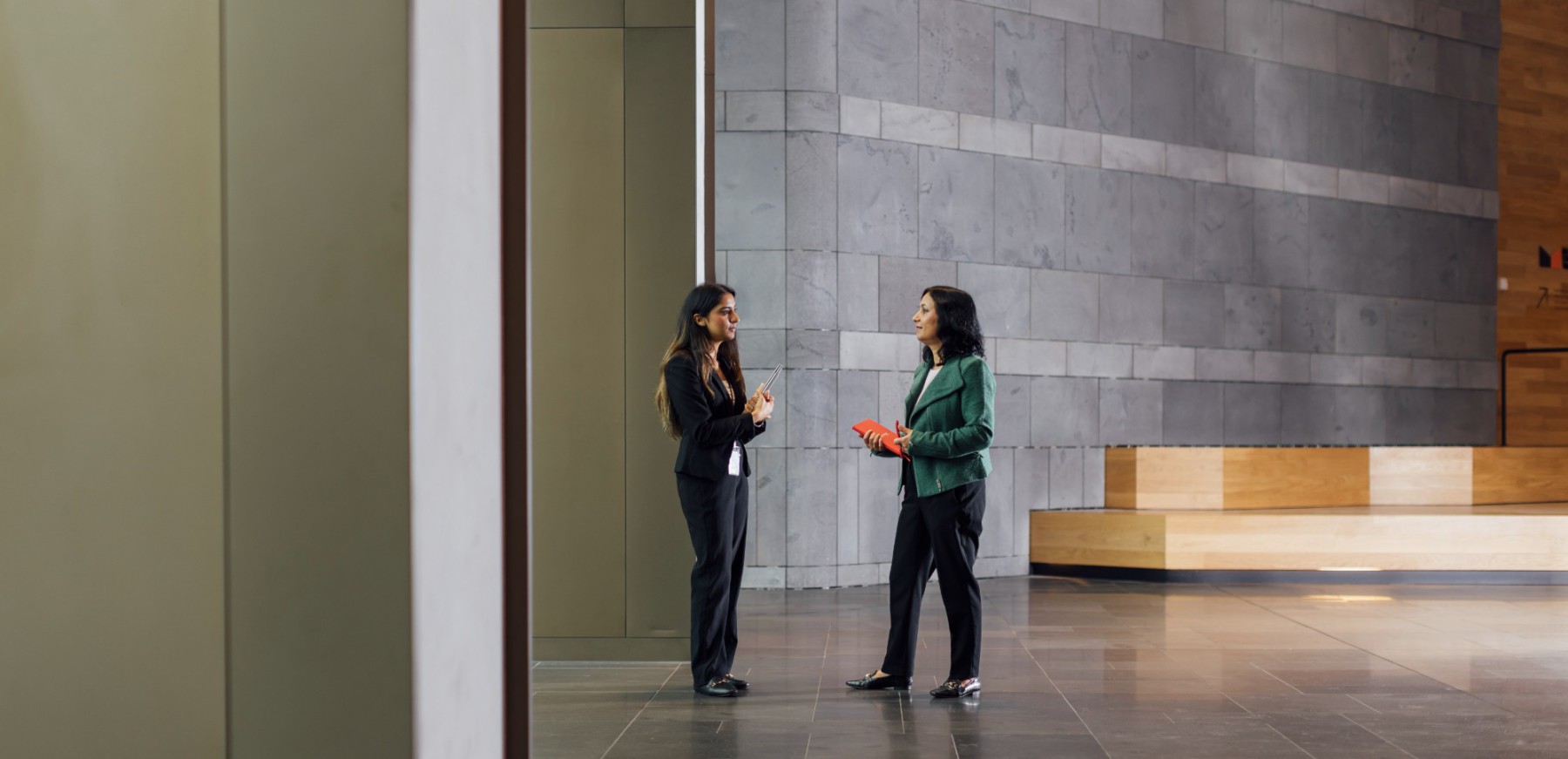Sushana’s choice
Sushana tells us that she received three offers, but ultimately opted for ACCIONA. Why did she choose it? “I would say it’s the way they work towards sustainability… They flew me over from Sydney to Melbourne and I looked at all the setup and everything, and what’s their culture,” she reminisces. The opportunity to leverage her own potential and grow also weighed heavily: “I expressed my desire to take on various tasks because I had the knowledge and was eager to explore more. My manager at the time was very encouraging. He said, ‘OK, you can do this. You are going to handle everything in GIS,’ which really played to my strengths.”
In addition to the culture and opportunities to grow, she was attracted by the type of projects: “I also looked at the projects on the website. When you are applying for a job, when you are serious about the company, you start exploring about what do they do. And I looked at the job and they were doing really interesting things.” And not just the type of projects, but the ability to be present throughout the entire process of each one: “Working on these wind farms and facilities allows you to see the projects from the conceptual to the operational phase.”
“Working on these wind farms and facilities allows you to see the projects from the conceptual to the operational phase”.
So Sushana bet on ACCIONA. The decision also allowed her to move to live in Melbourne with her partner, a project director in multinational consultancy who until then had been working in New Zealand and received a job offer in the same city.
From geography to botany and culture
As her first manager told her during the interview process, ACCIONA Energía gave her the opportunity to apply her GIS knowledge to new projects. In summary, Sushana is responsible for providing spatial services required by the energy business in Australia, essentially on every project and at every phase of the project’s life cycle (greenfield to operation).
She uses spatial data, software, and tools to identify and analyze the areas where wind and solar farms can be developed. And through spatial and other relevant databases, she analyses not only aspects of geographical constraints, but also issues related to land and ownerships, topography, hydrology, biodiversity, and cultural heritage, and enables stakeholders to visualize them through online platforms to make informed decisions.
And here sometimes the plant scientist she was in her beginnings emerges. Thus, a few years after starting her journey at ACCIONA, Sushana had the opportunity to collaborate in the development and construction of the MacIntyre wind farm, the largest of its kind in Australia, and use the data of other inhabitants such as protected plant species and its significant habitats.
Among them is Macrozamia conferta, an antediluvian plant that was part of the diet of dinosaurs and is now considered a protected species. Thanks to the implementation of GIS, Sushana could help technicians to map and advise the areas where this species was located. Finally, the specimens were safely relocated in an ambitious operation carried out by the environmental, compliance, and construction teams.




